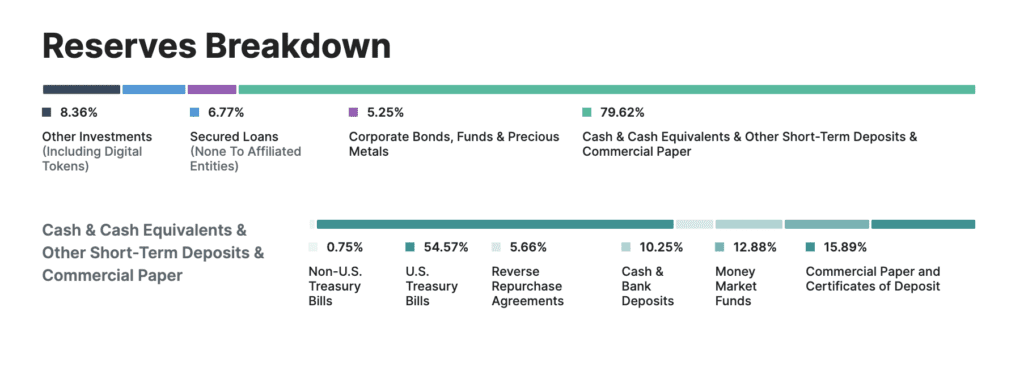As the crypto winter sets in for the long run, stablecoins seem to be emerging as the crypto community’s warming fire.
Stablecoin usage has seen a steady rise. In June, a report was released showing the stablecoin sector had a market share of over 15% of the total crypto market.
Insider Intelligence found that the number of U.S. crypto payment users will reach 5.5 million in 2023, a jump of 350% in just over three years.
Seemingly forgetful of the Terra tank six months ago, many are celebrating the coins. Slowly the market is coming to accept them. Reports of stablecoins used for wages, coffee and yoga classes, and mortgage products are filtering through the news ecosystem.

“Right now, people want to hold USD, or USDC because the dollar is strong and has high interest rates,” said Lex Sokolin, Head Economist at ConsenSys.
“This is true in crypto and outside of crypto. To that end, crypto needs onchain versions of such assets. Whether or not the products are ready, there is demand for them, and people will use them.”
However, despite increased proposed regulation, stablecoins remain primarily in the crypto “wild west.”
Many are still black boxes of backing uncertainty. In particular, Tether, the most widely used stablecoin globally, has faced numerous counts of accusations and rumors as to their backing reserve.
So, is this trust in the assets misplaced?
Different types of stablecoins
There are several types of stablecoins, but broadly they can be divided into two groups.
Some consider the asset-backed stablecoin as the more robust and reliable of the two as real-world assets back it. This can be in commodities such as gold, assets such as real estate, or fiat currency.
Supposedly, each stablecoin is backed by a certain amount. For fiat-backed, this is usually on a one-to-one basis or more. However, some stablecoins’ backing can be unclear, despite their position on the blockchain supposedly supporting transparency. Tether (USDT) has been at the brunt of much speculation about their support, even though they are one of the most widely used stablecoins.
“Tether has survived several confidence crises, and there is good evidence that people find it useful for onboarding and offboarding into crypto in Asia,” said Sokolin. “Whether or not it is fully backed is always a shadow over its use. That’s a risk that users seem to be fine taking to benefit from its proxy for USD.”
Many institutions now choose not to work with Tether due to the lack of clarity. However, Tether continues to release statements ensuring the validity of their claims.
The other type of stablecoin, algorithmic (which some call non-collateralized), was brought into the spotlight earlier this year. Terra, a widely utilized algorithmic coin, crashed in May 2022, bringing down multiple DeFi institutions.
Using an algorithm, this stablecoin facilitates a change in supply and demand between it and another cryptocurrency that props them up.
“Algorithmic stablecoins that are not overcollateralized attempt to manipulate the price through automatic buying and selling, or to mint and redeeming, of supply,” Sokolin continued. “This can work in the short term, but in the long term, and at sufficiently large amounts of capital, the automatic mechanism can fail to have the desired effect in creating a market price and spin out entirely.”

Protocol-native stablecoins gain momentum
Perhaps as a response to the ongoing crypto winter and declining global economy or as a sign of the crypto market maturing, another type of stablecoin has gained momentum.
Protocol-native stablecoins are increasingly being released by DeFi protocols such as Aave. Although sounding complicated, they present themselves as an additional form of asset-backed stablecoin, although digital native and backed with on-chain assets selected by the associated DAO.
“Any protocol with a sizeable treasury has to think about market fluctuations in the current environment,” said Sokolin. “Moving towards a model that doesn’t rely on trading, margin lending, and market sentiment is paramount.”
“There are only a few DeFi primitives that fit that description, and issuing a stablecoin is one of them. Stablecoins also increase the money supply in the ecosystem, a boost that worked in the earlier market environment.”
Steps made in regulation could provide structure for trust
Ongoing regulation of the crypto market could give additional structure to the stablecoin environment. The European MiCA regulation, set to come into effect in 2023, paid particular attention to stablecoins.
The bill attempts to protect users by requesting sufficient liquidity pools to be built up before issuing the coins, which would be legally protected from insolvency. This level of clarity is welcomed by many in the space.
When speaking to Yves Longchamp, Head of Research for SEBA Bank, he highlighted the importance of a precise, transparent measure of stablecoins so consumers can make informed decisions for their investment and use.

“I think the differences between stablecoins must be made clear,” he said. “You have the different types with different levels of quality and stability. This needs to be clear so that when people use one or the other, they understand that even though they look the same, they are actually completely different.”
The MiCA also requires algorithmic stablecoins to be backed by assets, lest they be considered a standard crypto asset. According to draft legislation, the US could go one step further by banning algorithmic stablecoins. Talks continue regarding how the whole stablecoin sector will be addressed.
“We agree on all the components of what the asset is,” said US Rep. Patrick McHenry (R-N.C.) at DC Fintech Week. “We’ve come up with a pretty ugly baby. It is a baby, nonetheless.”
Stablecoins provide real advantages
Many consumers in economies showing high volatility and low trust in institutions have turned to the assets as a form of wealth storage. The ease of access to cryptocurrencies has made stablecoins pegged to the US dollar a safer way for some to ensure the value of their money.
The crypto market has provided an “in” to a stable fiat currency without too much friction and cost, requiring much less KYC than an American bank and much more safety than fiat USD cash in the economies’ informal markets.
RELATED: How to increase adoption of DeFi in LatAm
The lack of friction across borders poses another benefit currently without a match in the traditional finance sector. Based on the blockchain, stablecoins operate between wallets without jurisdictions, creating a seamless path for cross-border transactions.
“What crypto is trying to achieve is to say, look, we’re creating a global currency that can move across borders without isometrics and in real-time,” said Chris Skinner at a recent Innovate Finance Forum. “That’s really attractive. And to be honest, I love that idea.”
“Equally, the key thing about a global network is that the Internet doesn’t recognize culture. It doesn’t recognize borders. It’s global. It’s immediate. It’s real-time.”
Although governments are exploring Central Bank Digital Currencies (CBDCs) to mirror such benefits, it is unclear whether ease of usage will extend to the level at which cryptocurrencies operate.
CBDCs are pegged to the respective currencies of their central bank. Although experiments are being conducted on their multijurisdictional potential, many have provisionally speculated on initial retail usage primarily within their economic area. Despite this, CBDCs also could bring their unrivaled benefits to the market.
It’s safe to say stablecoins may have suffered a few knocks of confidence this year; however, undeniably, their benefits are unmatched in traditional finance. Their ongoing growth could indicate a bright future despite the rocky economic conditions ahead.
RELATED: ECB’s CBDC investigation breaks new ground


